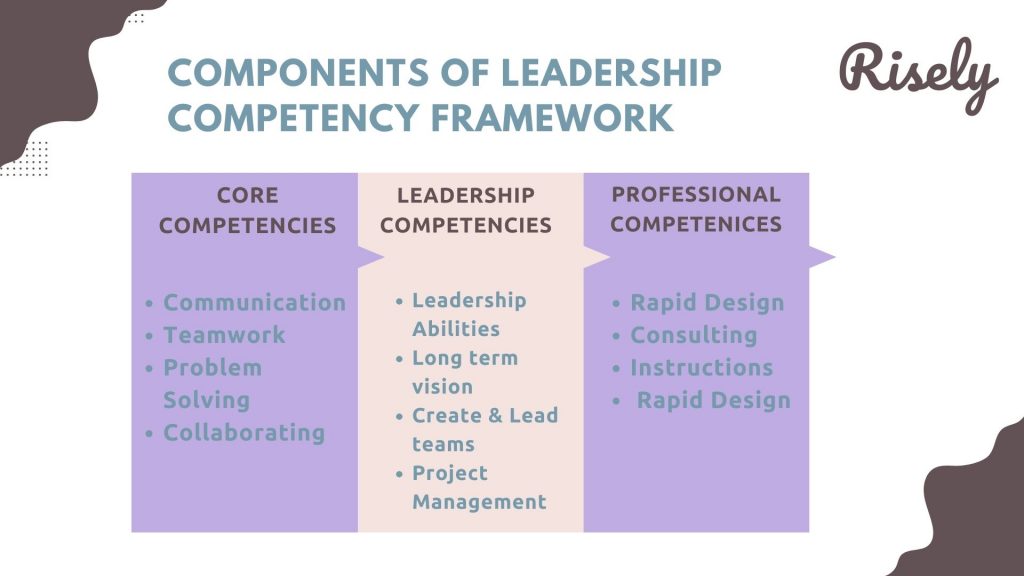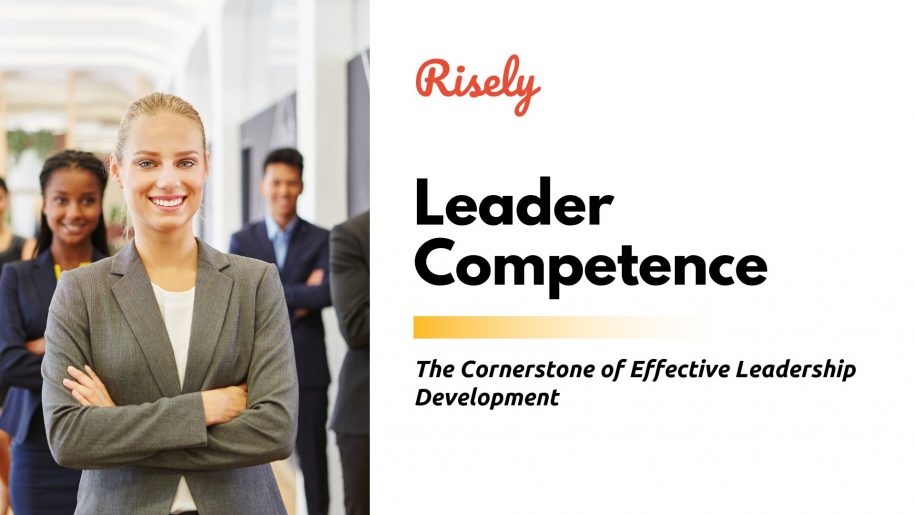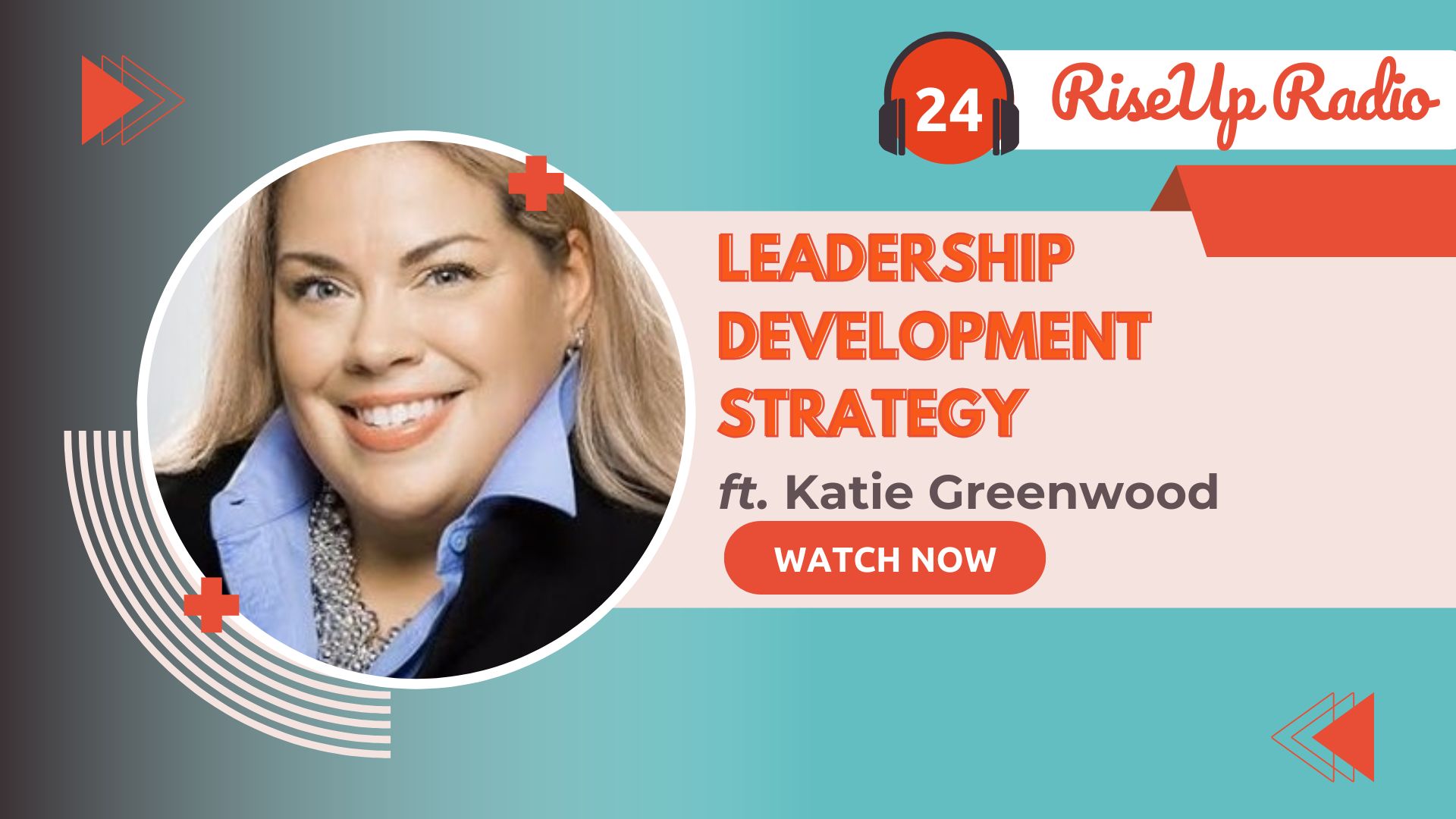Leader Competence: The Cornerstone of Effective Leadership Development
Imagine you’re leading a talented team, but somehow, projects are stalling, and motivation seems slipping. You see the potential in your people, but something’s missing that extra spark to ignite their full capabilities. This is where effective leadership development comes in. Think of L&D as equipping your team with the right tools and knowledge to excel in their roles and inspire and guide others. Here’s where the concept of leadership competencies takes center stage. These specific skills, behaviors, and knowledge define successful leaders within your organization. The same approach applies to building a high-performing organization. Just like athletic prowess needs refinement, effective leadership requires targeted development. That’s where Leadership Development (L&D) programs come in. But simply enrolling leaders in workshops isn’t enough. To truly empower them, you need a well-defined framework – a roadmap that outlines the specific competencies crucial for success.Table of Contents
- Leader Competence: The Cornerstone of Effective Leadership Development
- Other Related Blogs
What is Leader Competence?
Imagine yourself leading a project. You need the knowledge to set a clear direction, the skills to navigate challenges, and the right behaviors to motivate your team. That’s the essence of leadership competencies – a combination of what you know and can do and how you act that propels your team toward success. Think of it this way: strong leadership is like a three-legged stool. One leg represents your knowledge about the industry, the organization, and effective leadership principles. The second leg is your skillset, encompassing your ability to delegate tasks, solve problems, and communicate effectively. Finally, the third leg is your behavioral traits, like your ability to inspire, build trust, and foster collaboration within your team.Why is it Crucial to have Clearly Defined Leadership Competencies within an Organization?
A shared understanding of what effective leadership looks like in your company is a compass for several reasons. Firstly, it allows you to design targeted L&D programs. Instead of a generic one-size-fits-all approach, you can tailor development programs to address specific competency gaps identified within your leadership team. This ensures leaders receive the precise training and resources they need to hone their skills and knowledge in critical areas. Furthermore, clearly defined leadership competencies provide a standardized performance evaluation and development framework. Having a clear picture of the leadership behaviors expected at each level. This enables you to objectively assess your team’s strengths and weaknesses, identify areas for improvement and set specific development goals. It’s like having a roadmap—you know where your leaders are currently positioned and how to help them bridge the gap to reach their full potential. Finally, a well-defined competency framework is vital in selection and succession planning. When promoting individuals or choosing external candidates for leadership roles, you have a benchmark against which to measure their capabilities. This ensures you select individuals with the specific knowledge, skills, and behaviors required to thrive in leadership positions within your organization. It’s like having a perfect recruiting filter – you can confidently identify the right talent to lead your team forward.Other Interesting Reads
Crafting a Leadership Competency Framework
So, we’ve established that clearly defined leader competence is the building block of effective leadership development. But how do you translate this understanding into an actionable framework? Think of it like building a house—you need a solid blueprint to ensure a sturdy and functional structure. Here’s where L&D leaders like yourself step in. When crafting a leadership competency framework, there are three key considerations to keep in mind:- Alignment with Organizational Strategy: Just like a house needs to fit the landscape, your framework should be an extension of your organization’s DNA. Ask yourself: what are our core values? What are our long-term goals? The competencies outlined in your framework should directly support these objectives. For instance, if innovation is a core value, the framework might emphasize competencies like creativity, risk-taking, and embracing change.
- Leadership Levels: Imagine a two-story house – the structural requirements for each floor would differ. Similarly, the leadership competencies required at various levels within your organization will vary. Front-line leaders might need a strong focus on coaching and development, while senior management might require strategic thinking and the ability to navigate complex business landscapes. Tailoring competencies to specific leadership levels ensures targeted development and equips leaders with the tools they need to excel in their respective roles.
- Industry Standards: While every organization has its unique culture and goals, staying informed about industry best practices is crucial. Researching relevant leadership frameworks within your industry can provide valuable insights and ensure your framework incorporates the essential competencies recognized and sought-after across the field. This ensures your leaders are effective within your organization and possess the skillset to compete effectively in the broader industry landscape.

Deconstructing the Framework: Core, Behaviors, and Proficiency
Now that we have the blueprint let’s delve into the specific components that make up a well-defined leadership competency framework. Imagine this framework as a detailed architectural plan – it outlines the essential elements that contribute to building a strong and successful leadership foundation.- Core Competencies: They are the fundamental building blocks of effective leadership, applicable across all organizational levels. Think of them as the pillars that support the entire structure. Core competencies include communication, strategic thinking, problem-solving, and decision-making. These skills are crucial for leaders to effectively navigate challenges, guide their teams, and achieve organizational goals.
- Behavioral Indicators: Here’s where the framework comes alive. Vague statements about possessing a competency aren’t enough. We need to translate those general abilities into concrete actions. This is where behavioral indicators come in. For each core competency, you must define specific, observable behaviors demonstrating successful performance. For instance, a behavioral indicator for “communication” might be “Effectively communicates complex information to diverse audiences, tailoring the message and delivery style to ensure comprehension.” These indicators provide a clear picture of the successful application of competency in everyday situations.
- Proficiency Levels: Not all leaders are created equal. The expertise required for each competency will vary depending on the leadership level. Imagine a building with multiple floors; the foundation’s structural requirements differ from those needed for the rooftop. Similarly, proficiency levels establish the expected level of skill development for each core competency at different leadership stages. For instance, a first-line leader might need a basic understanding of strategic thinking, while senior management would require a more advanced ability to formulate and execute complex organizational strategies. Defining proficiency levels ensures targeted development and equips leaders with the appropriate skillset corresponding to their roles and responsibilities.
Putting the Plan into Action: Leveraging the Framework for L&D and Beyond
We’ve meticulously built the blueprint and identified the essential building blocks. Now comes the exciting part: putting the leadership competency framework into action. This leader competence framework is not merely a theoretical document; it’s a powerful tool designed to empower your L&D initiatives and propel leadership development within your organization.- Integration with L&D Programs: Imagine your framework as a project management tool. As different tools are used for various construction stages, the framework can be seamlessly integrated into diverse L&D programs to address specific leadership needs.
- Workshops: When designing workshops, map the learning objectives to the core competencies outlined in the framework. For instance, a workshop focused on communication skills can target behavioral indicators like “actively listens to understand different perspectives” and “tailors communication style to different audiences.” This ensures the workshop content addresses the competencies deemed crucial for leadership success within your organization.
- Coaching and Mentoring: The framework is a guiding light for coaching and mentoring sessions. Leaders can leverage the defined behavioral indicators to identify areas for improvement and set specific, measurable goals. Mentors can then provide targeted guidance and support, helping leaders develop the necessary skills and behaviors to excel in their roles.
- Assessment and Development Planning: Performance reviews become more objective and focused when the framework is used as a yardstick. By evaluating leaders against the established behavioral indicators and proficiency levels, you gain valuable insights into their strengths and weaknesses. This data then paves the way for personalized development plans. Leaders can identify competency gaps and choose appropriate training programs, coaching sessions, or mentoring opportunities to bridge those gaps and enhance their leadership capabilities.
Challenges and Solutions to Building a Robust Leader Competence
While a well-defined leader competence framework offers many benefits, the road to implementation isn’t always smooth. Here, we delve into some common challenges organizations face and explore effective strategies to overcome them:- Lack of Stakeholder Buy-in: Building a framework requires collaboration from various stakeholders, including senior leadership, HR, and L&D professionals. Without their active involvement and support, the framework might be perceived as an HR initiative rather than a strategic tool for leadership development.
- Subjectivity in Defining Competencies: Translating abstract leadership qualities into concrete behavioral indicators can be subjective. Relying solely on individual opinions can lead to inconsistencies and a framework that doesn’t accurately reflect the organization’s needs.
- Generic Framework, Limited Applicability: A one-size-fits-all approach doesn’t work. A generic framework that fails to consider the specific context, industry, and leadership levels within your organization will lack relevance and hinder effective development.
Strategies for Overcoming Obstacles and Maximizing Leader Competence Effectiveness
- Foster Collaboration: Ensure active participation from key stakeholders throughout the development process. Conduct workshops, involve senior leaders in defining leadership expectations, and obtain buy-in from HR and L&D teams responsible for implementing the framework.
- Data-Driven Approach: Don’t solely rely on opinions. Gather data through surveys, focus groups, and leadership assessments to identify the specific competencies crucial for success within your organization. Industry research and benchmarking can also provide valuable insights.
- Tailored Framework Design: Develop a framework specific to your organization’s needs and industry context. Consider the different leadership levels and tailor the required competencies and proficiency levels accordingly.
- Communication and Transparency: Once the framework is established, clearly communicate it to all employees, particularly leaders and aspiring leaders. Transparency fosters understanding, ensures everyone is on the same page regarding leadership expectations, and encourages individual development efforts.
- Continuous Monitoring and Improvement: The framework is a living document, not a static one. Regularly review and update the competencies based on evolving business needs, industry trends, and feedback from stakeholders. This ensures the framework remains relevant and effective in driving leadership development within your organization.
Wrapping Up
Effective leadership isn’t a stroke of luck; it’s a product of targeted development. Clearly defined leader competence – the knowledge, skills, and behaviors required for success – is the building block for this development. A well-crafted competency framework serves as the blueprint, outlining these essential competencies, establishing specific behavioral indicators for assessment, and defining the expected proficiency levels at various leadership stages. So, L&D leaders, the power lies in your hands. By implementing robust leader competence frameworks, you can transform leadership development from a scattered effort into a strategic initiative.Test your Leadership Skills with our Free Assessments.
Master the art of being an effective leader by reviewing your skills with a free assessment now.
Other Related Blogs
Building an Ultimate Leadership Development Action Plan
How to Build a Leadership Development Action Plan? Having a strong Leadership Development Action Plan is more critical than ever in today’s evolving business world. Whether you’re looking to drive…
Leadership Journey Examples on the RiseUp Radio Podcast
Leadership Journey Examples on the RiseUp Radio Podcast Leadership isn’t a destination – it’s a journey filled with twists, turns, and transformative moments that shape not just careers, but entire…
What is Immersive Learning? A New Era in Education
In this blog, you’ll learn what is immersive learning and how it is changing training, increasing engagement, and influencing the future of workforce development. … Read More
What are Learning Designs? All You Need To Know
This blog explains what learning designs are in depth while also covering it’s key components. It tells you about the process involved in creating a good learning design along with…


